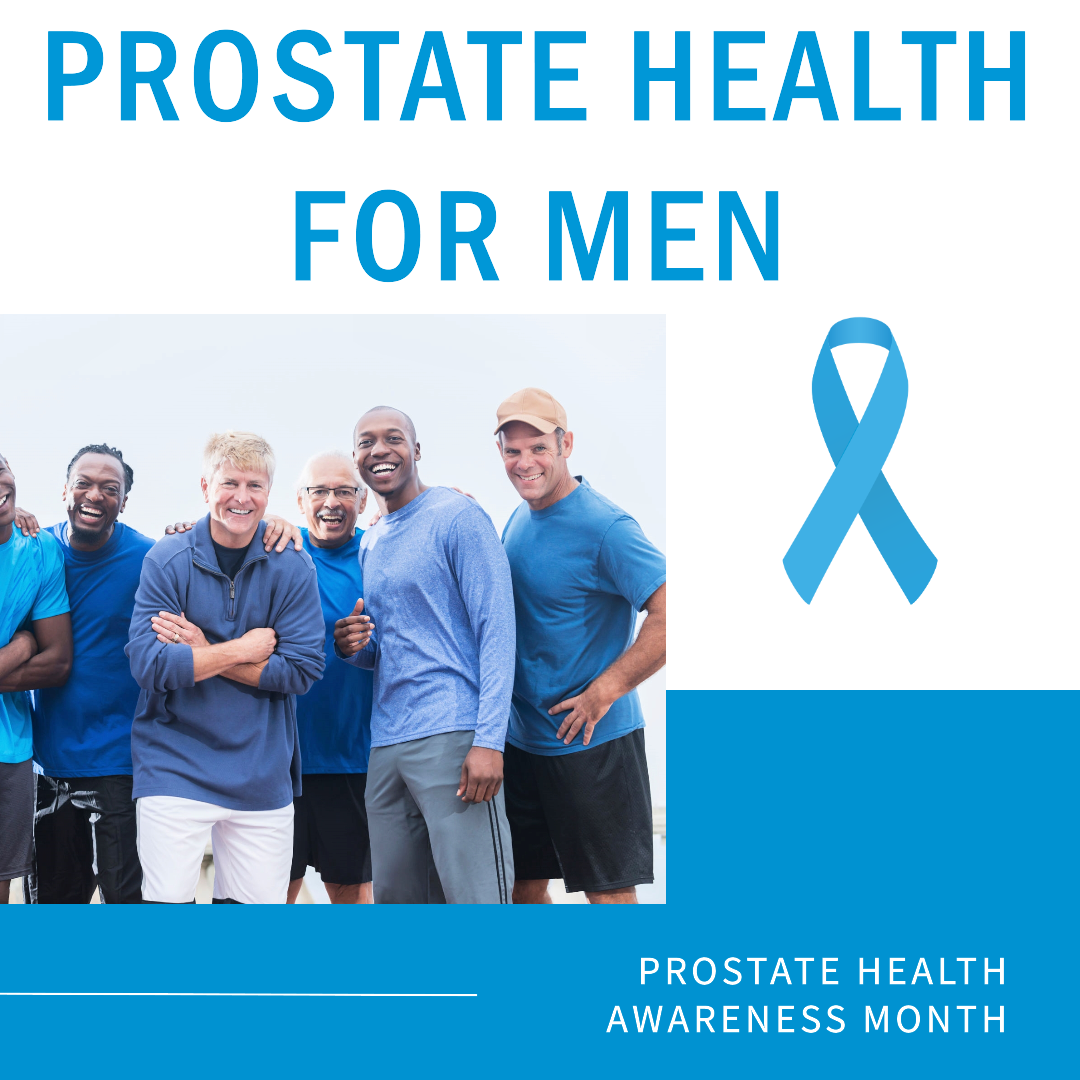Did you know that more than half of men will experience at least one prostate condition in their lifetime? This September, during National Prostate Health Month, also known as Prostate Cancer Awareness Month, River Bend Medical Associates would like to improve our community’s understanding of the signs and symptoms of common prostate conditions, including prostate cancer. By understanding the signs and symptoms, you can take proactive steps to protect your health and improve your quality of life.
Understanding the Prostate
The prostate gland is a small, walnut-sized organ located beneath the bladder in men. It plays a crucial role in men’s reproductive system by producing a fluid that nourishes and protects sperm. While most men don’t give their prostate much thought, it’s important to understand its function and the potential health issues that can cause discomfort, affect quality of life, and, in some cases, become serious health concerns.
Common Prostate Conditions
Prostate conditions are quite common among men, especially as they age. Here are the three of the most common:
1. Prostatitis
Prostatitis is an inflammation of the prostate gland. Prostatitis can affect men of all ages. It can cause pain in the pelvic area, fever, chills, and difficulty urinating. There are two main types of prostatitis: acute and chronic.
Acute prostatitis is often caused by a bacterial infection. It can cause severe pain and discomfort.
Chronic prostatitis is a long-term condition that can cause recurring symptoms. The exact cause of chronic prostatitis/chronic pelvic pain syndrome is often unknown.
Treatment for prostatitis may include antibiotics for bacterial infections and pain relievers to manage symptoms.
2. Benign Prostatic Hyperplasia (BPH)
BPH is a common condition that affects most men as they get older. Most men over the age of 50 will experience some degree of BPH. It occurs when the prostate gland enlarges, putting pressure on the urethra and making it difficult to urinate.
Symptoms of BPH include:
- Frequent urination, especially at night
- Difficulty starting or stopping urination
- Weak or slow urine flow
- A feeling of incomplete bladder emptying
Treatment for BPH may include:
- Lifestyle changes, such as avoiding caffeine and alcohol
- Medications to relax the prostate and bladder muscles
- Surgery in severe cases
3. Prostate Cancer
Prostate cancer is a malignant growth that starts in the prostate gland. While it’s often slow-growing, it can spread to other parts of the body if left untreated. Prostate cancer is the most common cancer in men in the United States.
Risk factors for prostate cancer include:
- Age
- Family history
- Race
- Diet
- Lifestyle factors
Symptoms of prostate cancer may include:
- Difficulty urinating
- Frequent urination, especially at night
- Weak or slow urine flow
- Blood in the urine or semen
- Pain during ejaculation
Treatment options for prostate cancer may include surgery, radiation therapy, chemotherapy, or hormone therapy.
Early Detection and Treatment

Early detection is key to treating prostate problems effectively. Regular checkups with your doctor are essential for monitoring your prostate health.These checkups can help detect problems early, when they are often easier to treat. During your checkups, your doctor can perform a digital rectal exam (DRE) to check for abnormalities in the prostate. This is a simple procedure where your doctor examines your prostate gland through your rectum. You may also need a PSA test, which measures the level of a protein called prostate-specific antigen in your blood. A high PSA level can be a sign of prostate cancer, but it’s important to note that other factors can also raise PSA levels.
Treatment depends on the specific prostate condition and its severity. Options may include:
- Lifestyle changes: Making changes to your diet, exercise habits, and medication use can help manage symptoms.
- Medication: There are medications available to treat BPH and prostatitis.
- Surgery: In some cases, surgery may be necessary to treat prostate cancer or BPH.
Lifestyle Factors and Prostate Health
In addition to regular checkups, certain lifestyle factors can also play a role in prostate health. These include:
- Diet: Eating a healthy diet rich in fruits, vegetables, and whole grains can help reduce your risk of prostate problems. Some studies suggest that foods like tomatoes, lycopene-rich fruits and vegetables, and fatty fish may be particularly beneficial for prostate health.
- Exercise: Regular physical activity can help maintain a healthy weight and reduce your risk of prostate cancer. Aim for at least 30 minutes of moderate-intensity exercise most days of the week.
- Weight management: Being overweight or obese can increase your risk of prostate problems. Maintaining a healthy weight through a balanced diet and regular exercise is important.
- Smoking and alcohol: Smoking and excessive alcohol consumption can increase your risk of prostate problems. If you smoke, quitting is one of the best things you can do for your health. Limit your alcohol intake to no more than two drinks per day.
When to See a Doctor

If you experience any of the following symptoms, it’s especially important to see your doctor:
- Frequent urination, especially at night
- Difficulty starting or stopping urination
- Pain or discomfort during urination or ejaculation
- Blood in the urine or semen
- Weak or slow urine stream
- Pain in the pelvic area or back
Prostate health is an important aspect of men’s overall well-being. By understanding the common prostate conditions, knowing the symptoms to watch for, and scheduling regular checkups with your doctor, you can help protect your prostate health and improve your quality of life.
If you have any concerns about your prostate health, don’t hesitate to contact us for an appointment with your doctor. Early detection and treatment can make a big difference.


